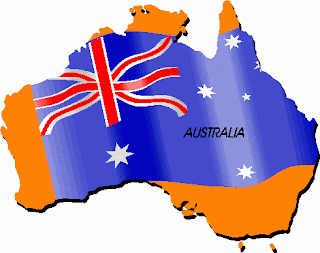Recently, a student at school sent a letter of gratitude to the employees of Tempe High. While this is just a glimpse into her note, she expresses her sincere appreciation for the dedication of the entire staff and accredits student success to our commitment "even after we have all gone home."
Wednesday, February 22, 2012
Saturday, February 11, 2012
Testing: AZ vs NSW
Fortunately, not all researchers agree that this is the only measure of a child's intelligence. Not only does Robert Sternberg see formal intelligence as being complimented by creativity and practical application, but Howard Gardner also believes that intelligence is the relationship of specific areas in which individuals may be more adept or talented. His theory of Multiple Intelligences includes everything from language and mathematical aptitude to a propensity towards relationships and spirituality. Particularly useful are his inclusion of learning strengths in the areas of kinesthetics and music which may create a more conducive learning environment for some children; setting up a battle field and acting out skirmishes of a given war or setting the names of states or multiplication tables to chants or tunes helps some children retain the information more easily because it involved more of their brain than just the left, analytical side. It seems to reason then, that testing children exclusively through the use of pencil to paper tests only assesses, as the textbook stated, a portion of the child’s achievement and potential.
Soon I hope to be posting a copy of the children’s report cards which illustrate the subjectivity of their evaluations. Students are graded on the teacher’s perception of their proficiency and well roundedness. Children are seen as holistic individuals with varying skills. There are few formal tests, instead comprehension is checked orally and children progress as they become proficient at a task. Unfortunately, this usually results in a form of tracking where students fall into a given range of ability and seldom work their way up.
Another interesting aspect of Australian education is the modular academic focus. Teachers concentrate on a specific content area throughout the year in order to build a thorough understanding of it before moving on instead of the choppy schedule seen in US elementary schools. Reading and writing are the primary focus in the first grade followed by mastery of other subjects such as Science, History and Math in subsequent years. Don’t misunderstand, there are activities that prepare students for the next unit, they are simply not the primary objective. Incremental counting drills (counting by 2, 4, 5, 7, etc…) prepare students for higher math skills in later grades.

What is the answer? I’m not sure. Children certainly need to be assessed in order to evaluate their individual needs as well as abilities, but how to do it in such a way that includes the entire child’s knowledge bank is beyond me. Perhaps at some point there will be a way to differentiate testing sufficiently that students can demonstrate their learning in more practical ways: in ways that make sense to them. Perhaps one day children can be valued for their individual learning styles and not seen just as a series of bubbles filled in on a form. Perhaps… some day…
Subscribe to:
Comments (Atom)



